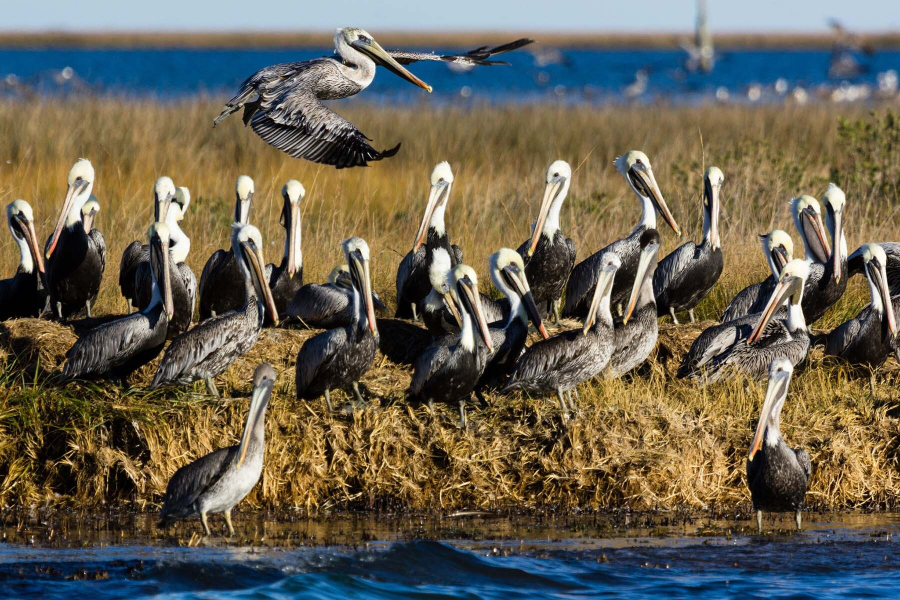Pelicans roost along the Bay's islands
Climate change has brought newcomer to Chesapeake region

A colony of brown pelicans (Pelecanus occidentalis) roosts on an uninhabited portion of Smith Island. A non-native species in the Chesapeake region, the brown pelican’s range has been expanding north into the Bay in recent decades. Once found only in the lower Bay, the birds can now be found breeding on islands in the mid-Bay in summer.
In the mid-20th century, widespread use of the pesticide DDT caused populations of many birds, including brown pelicans, to decline significantly. In 1970, the brown pelican was listed as an endangered species, but had recovered enough to be de-listed along its Atlantic Coast range in 1985 and throughout the rest of its range in 2009.
In 1987, only five known pairs of pelicans were nesting in the Chesapeake Bay region—by 2008, more than 1,000 pairs were nesting on Holland Island alone. Many experts credit the influx of pelican visitors to climate change: warmer weather and milder winters may be prompting the birds to expand the northernmost reaches of their range to include the Chesapeake Bay.
Learn more about the brown pelican, or learn about other ways climate change is expected to affect the Chesapeake region.

Comments
There are no comments.
Thank you!
Your comment has been received. Before it can be published, the comment will be reviewed by our team to ensure it adheres with our rules of engagement.
Back to recent stories